Director Gerry Nelson writes for Culture about the making of the acclaimed RTÉ hurling series The Game, which continues this Monday at 9.35pm - watch the first episode here.
"I don’t remember starting hurling, really!", Anthony Daly says with a boyish grin in Episode One of The Game and, five 5 years on from the first kernel of an idea, it’s hard for the production crew too to remember exactly how we started on this path.
"Hurling’s a game for the Gods. And Gods play it." Discovering hurling one of the privileges of living here. Incredible skill. Masterful series. #TheGame @RTEOne now. pic.twitter.com/lBuSPLMfmD
— Jon Williams (@WilliamsJon) July 30, 2018
Hurling meant something different to each one of us. Producer John Murray’s Dad, Gerry, played for Portumna and Galway and had always extolled the virtues of the sport to his son. Out of Gerry’s 80-year obsession came one of the sparks that grew into the series.
For me, it was a fascination from afar. Michael Moynihan of the Irish Examiner and Colm O’ Callaghan in RTÉ both were critical editorial guides on this journey, but from a director’s perspective, this project wasn’t undertaken by a hurling aficionado - I was a total beginner but tried to harness my naiveté in order to tackle this mammoth subject with entirely subjective and fresh eyes.
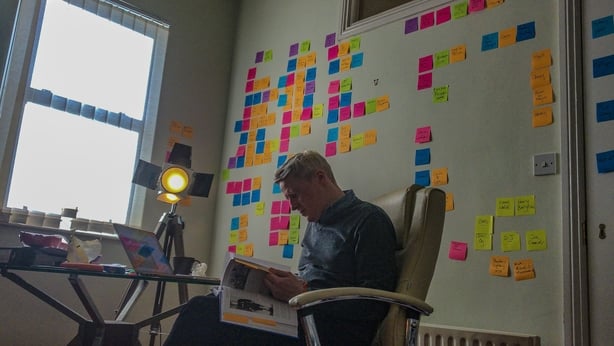
I had no entrenched views about the sport or its stars, but simply wanted a remarkable game to be celebrated and documented to its fullest for generations to come. But like all the best projects we have the privilege to work on, it was impossible not be drawn in.
Before too long we were all hooked, fully immersed in the lore and marvelling anew at the skills of the fastest field game in the world. It’s hard not to feel emotional or proud as choirs of hurling legends sum up the depth of feeling they have for this game.
Watch The Game on @RTEOne tonight at 9:35pm as it begins to tell the ultimate story of hurling! With epic live footage, interviews and rare archival footage it's not to be missed! #TheGame @RTEgaa pic.twitter.com/B34LIJxgR9
— The GAA (@officialgaa) July 30, 2018
And we challenge anyone not to feel the urge to pick up a hurley and sliotar and find a good gable end to bash it off as the closing credits roll. Indeed some of us were rushing to get hurleys into the hands of our own kids lest they become that most dreaded of things - "a late starter" - who, using Ger Loughnane’s definition in the series, is anyone over 6 years of age!
The hurling gods are in the details.
Natural history documentaries have long been the creative mainstay of Crossing the Line Productions, the company that has produced The Game for RTÉ. Back in 2013, The Secret Life of the Shannon had won top prize at Jackson Hole – the Oscars of the wildlife film-making world – and been Emmy nominated for cinematography.
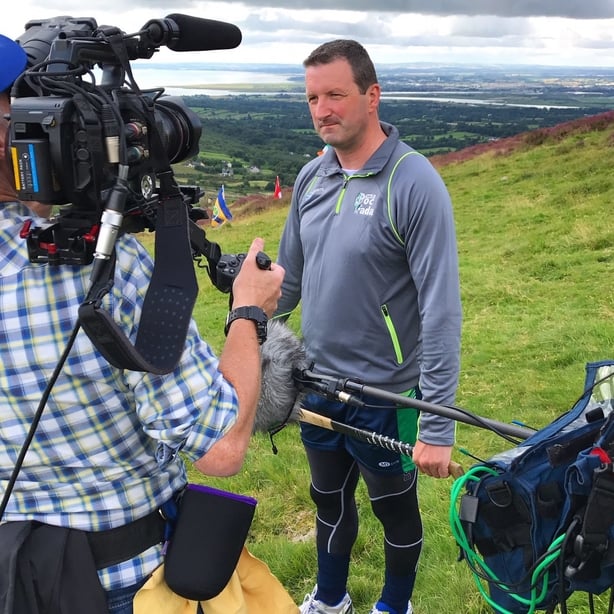
Puc Fada competition on the Cooley mountains in County Louth
The painstaking shoots to capture kingfishers diving or red squirrels scampering in exquisite slow motion sparked a conversation between John Murray and Colm O’Callaghan about what those same techniques could do if trained on the skills of hurling.
The idea of featuring a sideline cut, a solo run, a clash of hurleys or shoulder charge and their after shocks rippling at 40 times slower than life was just too tantalising a prospect not to pursue. Fast forward through countless proposals, funding applications, production meetings and preparations. With RTÉ, the GAA, the BAI all on board - and having secured Section 481 funding through the Department of Arts and Culture - we were off, green lit.
And with the fiercely dedicated Jessica McGurk lining up by my side, it was time for the throw-in.
From the start I knew we needed game action that stood apart from what we’ve come to know as standard live match footage. We wanted filmic, slow motion, super tight frames that really zeroed in on the detail, differentiating this from much of what has been seen previously. And so began an epic series of shoots ;- multiple games, multiple camera crews, multiple angles.
What a line from Sambo - "the lads you play with in the county team you make friends and get invited to their weddings - but the lads you play with in your club are the lads that will shoulder you to your grave - friends for life " #TheGame
— Mortimer Murphy (@MortimerMurphy1) July 30, 2018
But even the most experienced among us had to learn quickly how to follow the speed of the game - there would be no second takes. And as is often the case, sometimes we got the goods, other times we didn’t and every so often the stars aligned and we got something magical.
As Cork and Waterford squared up for their All-Ireland semi-final encounter in 2017, we had five different camera crews ready and in place from the off. And when Austin Gleeson took off on a second-half solo run, three of our slow motion cameras had him in their sights.
From every angle and in sumptuous detail, every step, move and nuance was captured, down to the bending hurley of a despairing Cork defender as he made a last ditch attempt to stop one of the most audacious scores seen in Croke Park.
It’s a moment of skill you may have admired on the day – either live in the stadium or on television - but, filmed at 500 frames per second, viewers will now have the chance and time to see it revealed in all its glory, head-on and full-on.
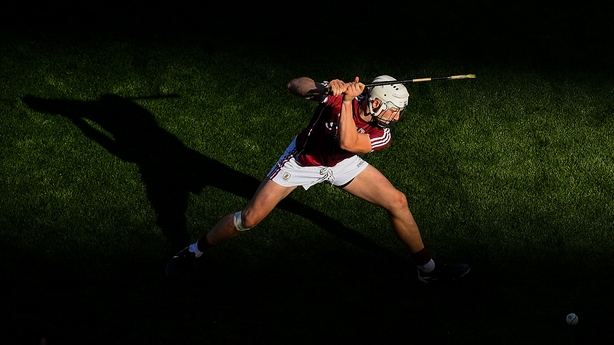
Sustaining a dream
As the former Tipperary player and manager, Eamon O’ Shea, says during the series, hurling "runs deep". Ans we wanted the visuals on The Game to be deep and rich too.
In the title sequence, a young hurler hones his craft in a dark handball alley. And it’s difficult to think back to when that scene was merely words and ideas on a page. We had always wanted to open with a lone hurler emerging from the shadows, striking ball after ball against a grey wall that stands between him and his dreams.
Finding the right location took almost as much dedication as any All-Ireland winner and one of our producers, Zlata Filipoviç, traipsed the length and breadth of the country trying to source what we needed. The alley in Cullenstown, Co. Wexford, was nearly too good to be true. Built on the coast, The Irish Sea crashed in tandem with every swing of the hurley and smack of the sliotar – right in the middle of the bas.
My Mam, with zero interest in GAA despite being married to an All-Ireland winner, just watched #TheGame and said to me, "Pip, I think I’d like to play Camogie, I think I could give it a go...." Talk about sparking inspiration!!
— Pippa (@pippadoyle92) July 30, 2018
The perfect coming together of landscape and subject. But whether or not it was re-enacting the drama of an All-Ireland day or capturing the aura that surrounds the crafting of a hurley, we aimed to bring those same cinematic values to every shoot.
The series soundscape too was crucial, and another lone hurler was Paul Finan, who spent countless solitary hours slaving away in his studio. The time and care he lavished on the detail has made every sound, from the gentle swish of a hurl through blades of glass to the wild roar of a crowd on Hill 16 or the full on collisions of player on player, reverberate and resonate beyond the screen.
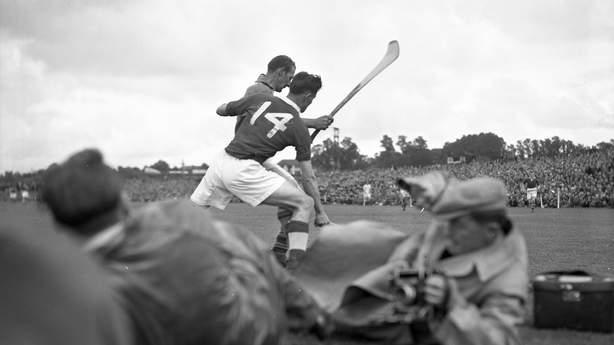
Hurls on film
How do you tell a story that spans hundreds of years? Or thousands of years if you want to take it back to the time of Cú Chulainn and Na Fianna? Archive was always going to be crucial, of course. But just like with the filming of games, we wanted to root deeper and maybe try and find more special items from the past.
And the search for one thing led to another. On the hunt for footage of Fr. Tommy Maher, a name familiar in Kilkenny and beyond, an untouched roll of film was discovered in the Irish Film Institute. The film Iománaíocht had been made in 1965, but clearly had much older footage within it. Stored on 16mm film, we had it transferred and viewed.
The excitement in the edit suite was palpable. Not only did it feature Fr. Tommy Maher, but there he was, out on a hurling field, training a young Eddie Keher, another of the great Kilkenny ball-players.
Elsewhere, young boys who’d just had their first hurls made for them, ran out in their shorts, woolly jumpers and jackets to put them to use out for the first time. And the demonstrations of the skills of the game – some by men in their Sunday best – were the icing on the cake.
In another Government information film, I discovered rare footage of Christy Ring – the legendary Cork hurler and arguably the greatest player in the history of the game – from 1942.
Filmed over two years, #TheGame is a ground-breaking documentary series celebrating Ireland’s blistering national sport.
— RTE One (@RTEOne) July 27, 2018
Starts Monday at 9:35 pic.twitter.com/0RDXEjoB4Y
The 1918 film, Knocknagow, meanwhile, features possibly the first ever cinematic representation of hurling. Each discovery only spurred us on to delve further.
As well as the discovery of the rare there was also the restoration of the forgotten. A van trundled through the Essex countryside carrying its precious cargo of long-archived British Pathé film reels.
In every canister were wonderful old black & white news pieces, with quintessential English voiceovers describing, in quirky detail, the great hurling finals of the 1920s, 1930s and 1940s.
Some of those reels disintegrated on opening, others had shrunk and proved highly resistant to modern scanners but, with much patience and persistence, ten or more were carefully transferred to full HD resolution.
Our series includes this historic match footage, never previously seen. But more importantly, those reels are now safely preserved forever.
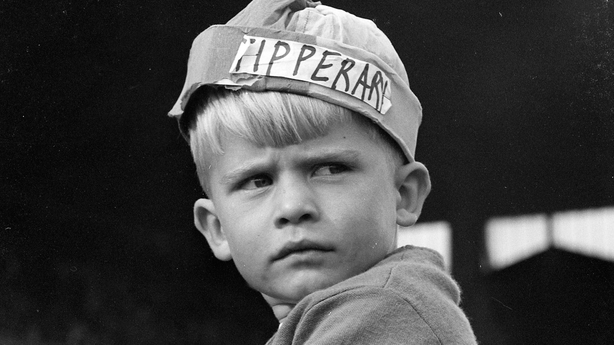
It’s in our DNA
We wanted this to be more than just a sports documentary series. The story of hurling is intrinsically linked to a story of Ireland and the story of ourselves. You don’t have to have played one of our national sports to recognise its importance to a national identity.
Many opinions & theories abound about what can be done to improve the emotional health & wellbeing of the Irish nation and its people. I think the great Séan Óg O hAilpín captures it wonderfully tonight on #thegame "The greatest human need..is to be loved and is to be accepted" pic.twitter.com/Kv1HYpaISw
— Conor Cusack (@Conor14Cusack) July 30, 2018
And you can’t chart the journey of hurling in a vacuum :- for each leap in evolution of the sport you can see a modern Ireland progressing alongside. This made for a bigger challenge but an altogether more interesting one. And now, after fifteen months of filming and six months of tireless work from editor Gretta Ohle in the edit suite, we’re finally nearing the end of our journey. And what has made The Game?
It’s a truism that at the heart of every good documentary is a story, but no story has heart without people. The real privilege for me has been in sitting close to almost sixty different men and women and listening to them tell me what this game – hurling - has meant to them. So many memories, countless laughs and more than a few tears
Often for hours on end, players past and present, managers, commentators and living legends chatted not about the ins and outs of specific games but about the role that hurling has played in their lives and the lives of their families, parishes and communities.
Such an honour to meet and interview 100 year old Dick ‘of the Church’ Tullaroan who’s been to nearly every All Ireland starting in 1931 #thegame pic.twitter.com/Ejf6q8EWp1
— CTL Films (@CTLFilms) July 30, 2018
And however much hurling has evolved and changed over the years, their words are echoed and mirrored in each other’s stories and throughout the eras. The people remain the same – their passion, their dedication and their pure love for the game.
Gerry Nelson directed the three-part documentary series The Game, which continues on Monday, August 6th on RTÉ One at 9:35pm. Commissioned by RTÉ’s Factual Department and produced by Crossing the Line Productions, it is made in association with the GAA and BAI and has been supported by incentives for the Irish film industry provided by the Government of Ireland.

